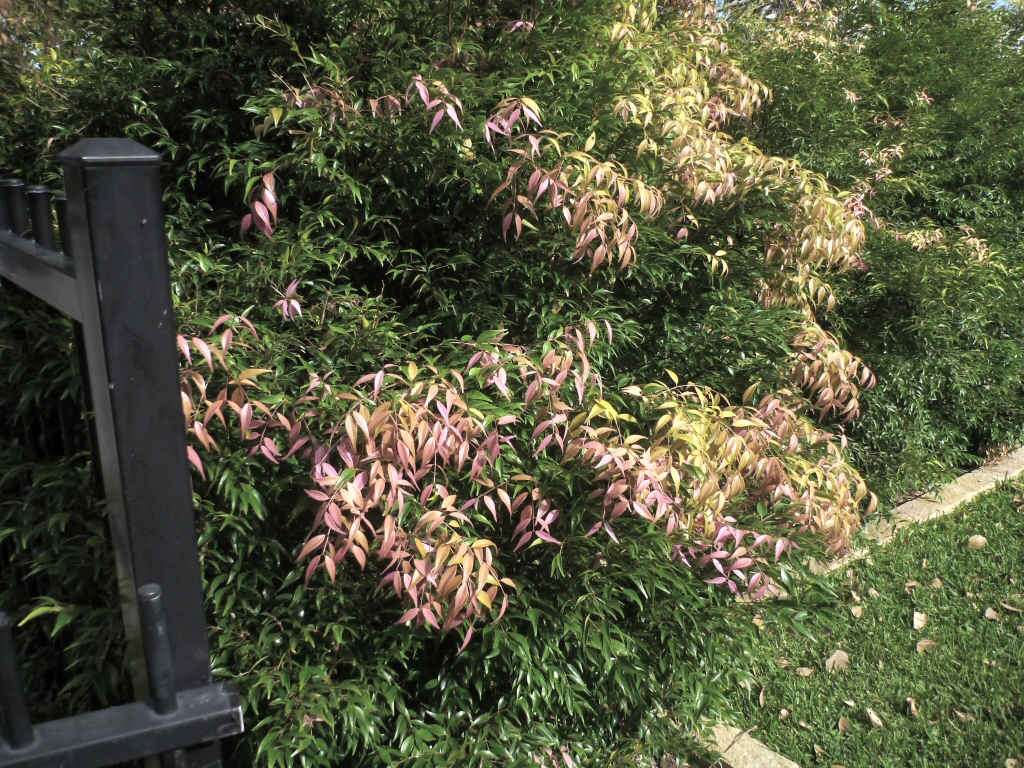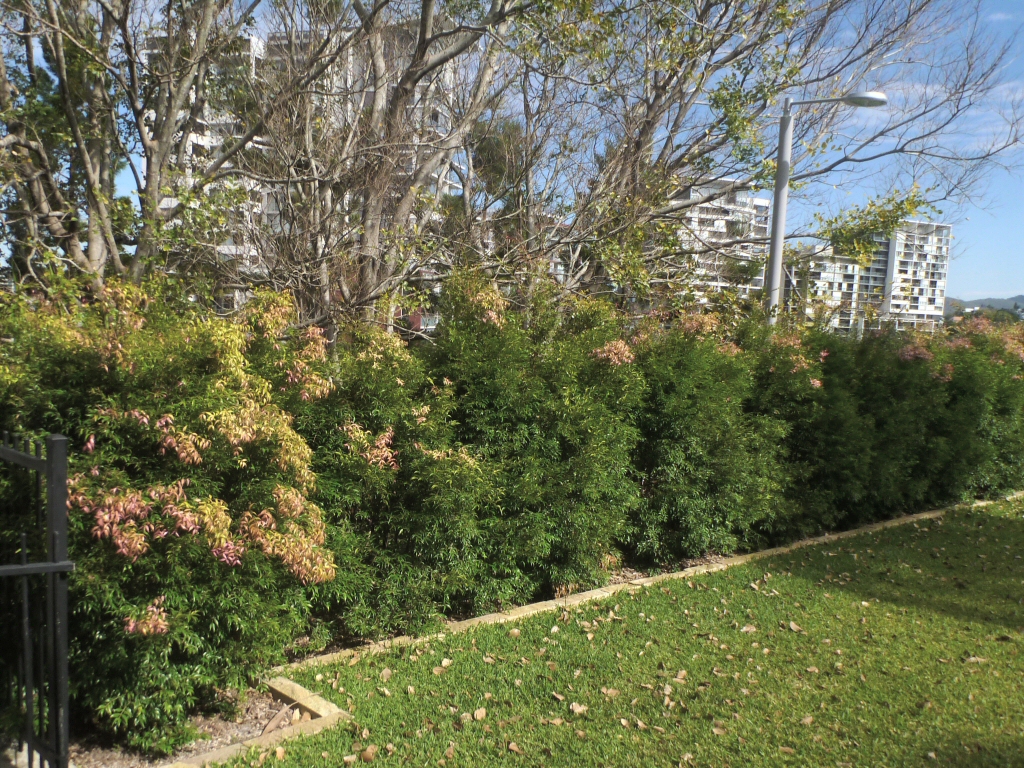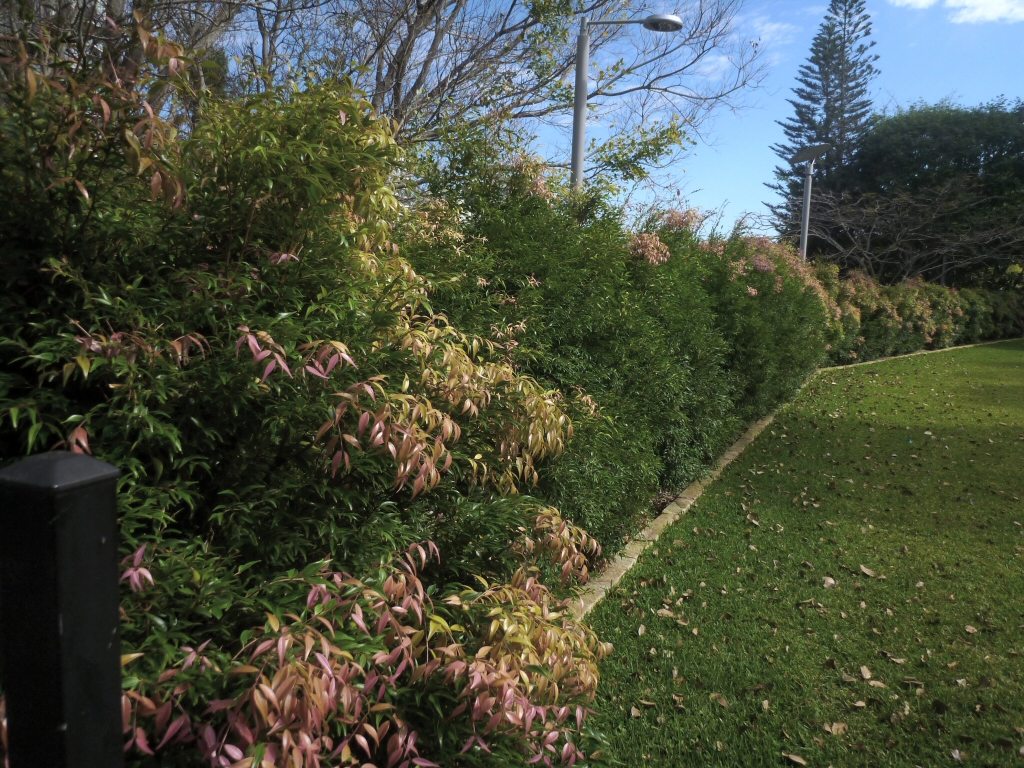A medium sized ornamental rainforest tree with glossy green foliage that can be used for hedging, shade and for screening and wind breaks. It has large decorative pink to red fruit that can be eaten straight from the plant as well as made into jams and condiments, and is attractive to birds. They have a tart berry taste with a slight clove tang. It generally grows to around 10 metres in gardens, can reach 30 metres in the wild, and can be pruned to size. Flowers in summer with fluffy cream flowers. Tolerates some frost when established. The foliage is a good filler in cut flower bunches.



